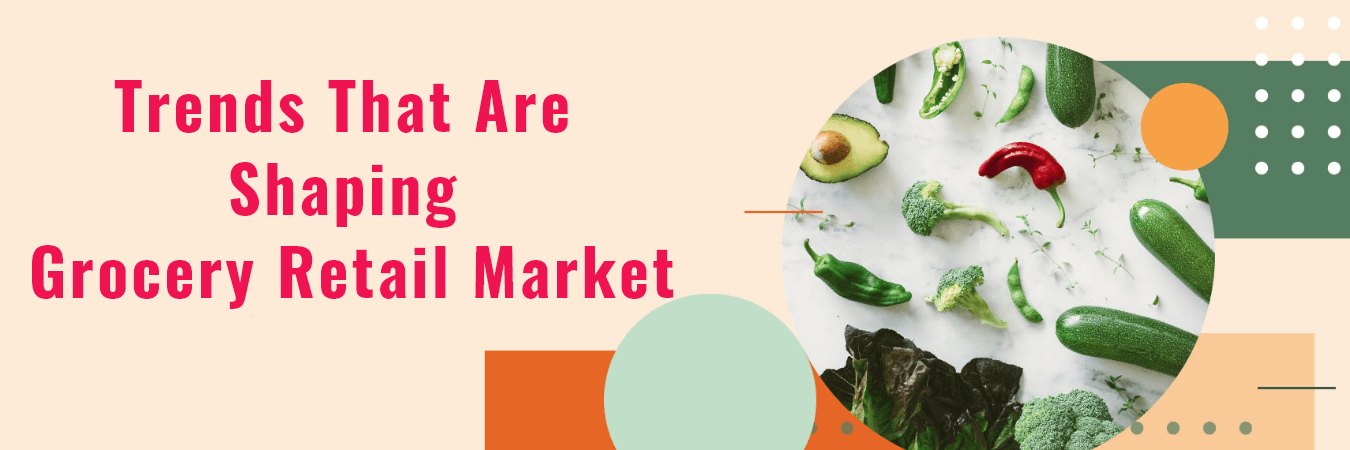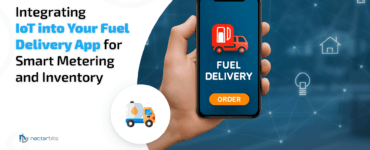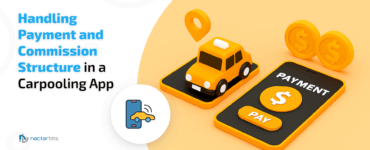Food and grocery are the major categories, that’s 47.2% of overall retail sales in the UAE. The increased grocery sales buoyed by improved living standards, superior quality products’ availability, and uplifted health awareness.
The retail sales in the country are forecast to register a robust CAGR of 6.9% during 2016-2021 to reach AED290.7 billion by 2021.
The constant growth in grocery sales remains unhampered even during pandemic times because of accelerated technology adoption. The digitization of grocery shopping has increased sales by manifolds, which was unimaginable before.
Besides, intensified demand for e-groceries overnight, retailers struggling to fulfill the massive orders, and a high volume of UAE citizens leveraged digital channels the first time- is experienced during the lockdown. However, the UAE retailers are smartly investing huge bundles for grocery mobile app development to meet the evolving customers’ demands and changing market conditions.
The rookie players, including Dubai store, Areem, Noon daily, and Sharaf DG have opened the doors for digital channels, and existing players such as Nana, Mrsool, and Spinneys have expanded the digital footprint. Additional“““““ly, the number of downloads, daily orders, and basked size shot up at a high pace. The new digital reality has brought up the range of opportunities for UAE retailers with a combo of online and offline worlds.
Read more : Tech Stack For On-Demand Fuel Delivery App Development
E-grocery retailing has become a trend that’s here to stay and increases its footprints in the years to come. The crowded market requires e-retailers to differentiate themselves with unique services, wow customer experience, and best marketing tactics while maintaining the bottom line.
Everything is not so rosy. Challenges baked into the golden opportunity knocking on the retailers’ doors.
Take a look at the challenges that UAE Grocery Retail Marketsneed to address before stepping into the online space. They are:
- Embracing digitization
The rapid shift to digitization is consumer-led in every corner of the world. The UAE is no different. The astronomical rise in the usage of mobile phones across Qatar, Bahrain, and UAE is increased to more than 100%, which is quite higher as compared to any other nation in the world. However, the Middle East countries are still showing reluctance to technology adoption.
The government initiatives like- Dubai IoT, providing venture capital funds for tech start-ups, investment in technology infrastructure encourage the retailers to cuddle the technology and soar high with tech wings enablement.
- Resolving supply chain issues
The scarcity of water and fertile land has forced the UAE government to import agricultural produce. However, the imported products get wasted before they reach the customers due to poor storage, handling, and distribution facility. It’s necessary to have specialized storage and transportation facility for different types of groceries (Perishable groceries like- fruits, dairy products, vegetables, and grains).
Read more : Top 10 Last-mile Delivery Trends to Look In 2021
The retailers are optimizing the supply chain by investing in supply chain management. So, customers receive the items at the right time and in good quality. Also, the retailers are complying with all the quality-related measures to ensure quality all the time. The seamless inventory management helps in keeping the items in stocks while minimizing the percent of wastage.
- Improved customer engagement
The grocery stores operate on a wafer-thin margin, where they need to keep the users engaged with rewards and other benefits. Boosting customer loyalty is a challenge for retailers. That’s where custom promotional offers or personalized experiences on all channels make the customer visit the store repetitively. By syncing the in-store and digital store strategies for customer loyalty fuels up customer engagement.

- Stepping in with customer behavior
Undoubtedly, the pandemic has changed the shopping lifestyle of UAE citizens forever. Customers are increasingly using digital payment options such as credit cards, digital wallets, or contactless payments for shopping. The fundamental change in the way customers shop and make a payment has brought security challenges in another hand.
The retailer fails to ensure data security risks losing customers’ trust and reputation, which is implausible to gain again. It’s an alarming fact that’s deterring the customers make a purchase or abandon the cart. The apt action will help in reducing the churning rate and activate customer engagement.
- Making last-mile delivery possible
The last-mile delivery is a roadblock in the UAE’s digital grocery retail market. The incorrect delivery address, cash on delivery as a preferred payment mode, and unavailability of the customers for order collection cited as the major problems in successful last-mile delivery. Adding an extra step for address verification during checkout makes the process long.
During the pandemic, the problem is grown because the delivery times extended to 10 days due to little transportation facility during the lockdown. The retailers have partnered with logistics companies providing alternative ways of delivery such as bikes or taxis. The leading retailers have got built the dark stores to fulfill the massive orders in the least time.
The grocery retail trends that reinvent the grocery landscape in the UAE
- Gain strong foothold with an acquisition spree
The grocery retailers are operating across UAE using three models- omnichannel, marketplace, and pureplay. The big fish consolidating with small fishes in the retail pond to establish their strong presence in the market. For instance, Carrefour- the omnichannel player acquired 26 Geant hypermarkets to grow the online and offline footprint.
Analysts found that grocery delivery giants acquiring more retail heroes to expand the hyperlocal network. Besides, for seamless deliveries, the retailers have strategically partnered with logistics companies to resolve the supply chain issues.
- Stay ahead of the game with omnichannel play
Traditional players like- Carrefour are attempting to enhance the omnichannel presence worldwide with unique plans. It involves building a separate Ecommerce interface for every geographical nation, opening more stores, and growing home deliveries. It’s not over. They did something more.
- The retailers can meet the unrealized need of the customers and left an indelible mark in different countries by harnessing the power of technological solutions- digital payments, AI-powered shopping assistants, and others.
- Choose the right marketing channel and promotional strategy to make the most out of the opportunities. The advanced algorithms help in identifying which channels are ideal to market the business and the strategies to improve the engagement level.
- The digital experience must be as seamless as an offline shopping experience. Get built the user-friendly interface that makes browsing, payment, checkout, and tracking- a great experience.
- A deeper understanding of customers’ buying journey
Hyper-personalization is imperative to mitigate the risks of losing the customer. It requires understanding the customers’ purchase lifecycle at a granular level. The retail brands are doing it in the following ways-
- The customer segmentation based on browsing behavior, purchase patterns, and transaction data is a key to targeting the customers accordingly.
- The customer behavior analysis reveals how the brand can up-sell or cross-sell the products to the customers. For instance, the customers found more receptive to masks or sanitizers purchases when suggested during a pandemic that signals the monetization opportunity.
- The new or lost customers’ data helps in sending targeted promotional offers that bring them back to the store. The improved interactions improve the chances of winning back the existing customers and converting the new customers.
- Work hard to deliver the experience that customers crave
In the 21st century, customers are ready to pay more for convenience and experiences. It makes perfect sense to pour in hard-earned dollars, time, and effort in delivering the best-in-class experience to the customers. You can engineer outstanding online and offline experiences in the following ways.
- Both- online store experience and in-store experience need to customize for keeping the customers stick with the brand. Generating dynamic vouchers based on the customers’ preferences, purchase history, and locations during checkout takes the personalized experience to the notch.
- Launch various types of loyalty programs, including reward points on every purchase or referral program, makes the customer feel they are earning something on every transaction. The loyalty points redemption encourages them to visit and shop from the store again.
- The rules defined in the app’s backend make the grocery shoppers increase the basket size and repeat purchases via customized messages after analyzing the shopping behavior.
Summing it up
From major retail players- Lulu and Carrefour to leading marketplaces are trying their best to improve online visibility and generate high profits. In the recent pandemic, the staggering spike in sales and ROI of online grocery retailers has unfolded the fact that technology adoption is here to stay. The UAE retail grocers will stay ahead in the game, which embarked on a mobile journey, and stays abreast with the latest trends. Stay tuned to us for more information.









